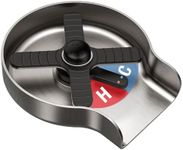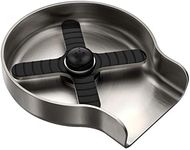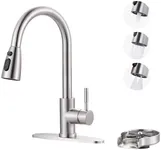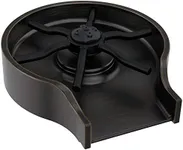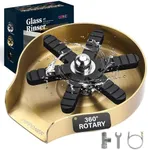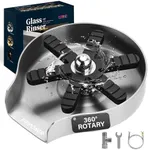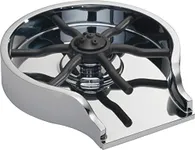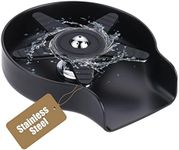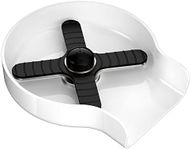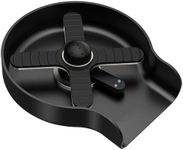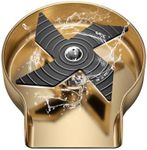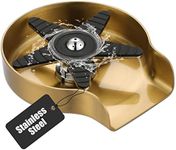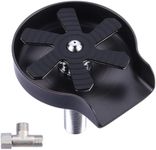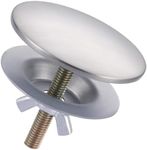Buying Guide for the Best Glass Rinsers
Choosing the right glass rinser can make a significant difference in maintaining the cleanliness and longevity of your glassware. A glass rinser is a device that uses high-pressure water jets to clean the inside of glasses quickly and efficiently. When selecting a glass rinser, it's important to consider several key specifications to ensure you get the best fit for your needs. Here are the main factors to consider and how to navigate them.Water PressureWater pressure is the force at which water is expelled from the rinser. This spec is crucial because higher water pressure can more effectively remove residues and particles from the glass. Water pressure is usually measured in PSI (pounds per square inch). For light use, such as in a home kitchen, a lower PSI (around 15-30) may be sufficient. For commercial use, such as in a bar or restaurant, a higher PSI (30-60) is recommended to handle frequent and heavy-duty cleaning. Consider your usage frequency and the types of residues you typically encounter to determine the appropriate water pressure for your needs.
Size and CompatibilityThe size and compatibility of the glass rinser refer to the dimensions of the device and its ability to fit various glass sizes and shapes. This is important because a rinser that is too small may not accommodate larger glasses, while one that is too large may take up unnecessary space. Glass rinsers come in different sizes, typically ranging from small units for home use to larger, more versatile units for commercial settings. Measure the space where you plan to install the rinser and consider the types of glasses you use most frequently. Choose a rinser that fits well in your space and can handle the glass sizes you use.
Installation TypeInstallation type refers to how the glass rinser is mounted and connected to your water supply. This spec is important because it affects the ease of installation and the rinser's integration into your existing setup. There are generally two types: countertop and built-in. Countertop models are easier to install and can be moved if needed, making them ideal for home use or temporary setups. Built-in models require more complex installation but offer a seamless look and are better suited for permanent, high-traffic areas like bars or restaurants. Consider your installation skills, the permanence of the setup, and the aesthetic you prefer when choosing the installation type.
Material and DurabilityThe material and durability of the glass rinser determine its longevity and resistance to wear and tear. This spec is important because a durable rinser will last longer and perform better over time. Common materials include stainless steel, plastic, and brass. Stainless steel is highly durable and resistant to rust and corrosion, making it ideal for heavy use. Plastic is lighter and more affordable but may not last as long. Brass offers a good balance of durability and aesthetic appeal. Consider how often you will use the rinser and the environment it will be in to choose a material that will withstand your usage conditions.
Ease of CleaningEase of cleaning refers to how simple it is to maintain the glass rinser itself. This spec is important because a rinser that is difficult to clean can harbor bacteria and reduce its effectiveness over time. Look for rinsers with removable parts or those designed with minimal crevices where dirt can accumulate. Some models are dishwasher safe, which can make cleaning even more convenient. If you plan to use the rinser frequently, choose one that is easy to disassemble and clean to ensure it remains hygienic and functional.
